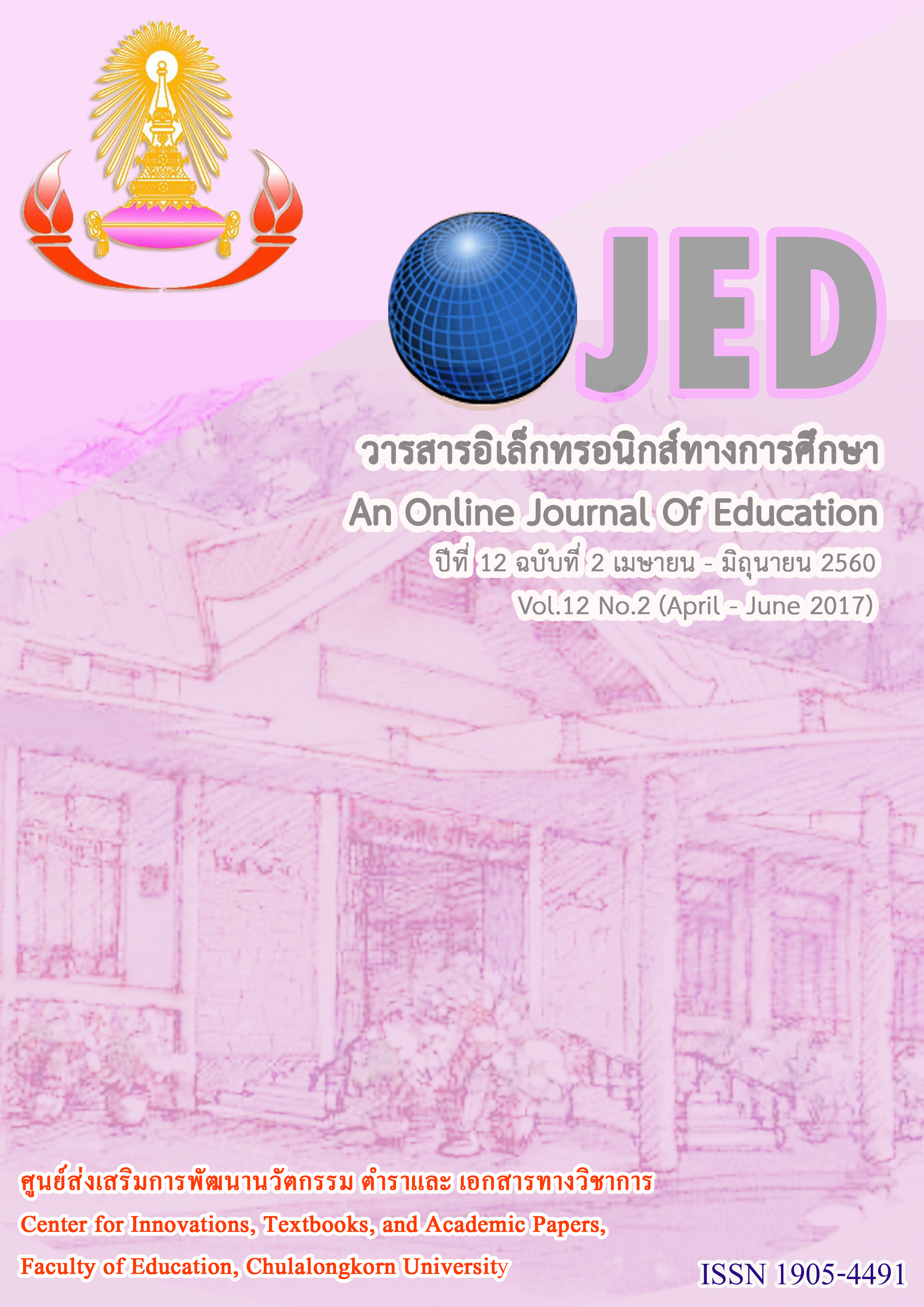แนวทางการพัฒนาการบริหารเทคโนโลยีสารสนเทศและการสื่อสารของโรงเรียนวัดโกสินารายน์
คำสำคัญ:
การบริหารเทคโนโลยีสารสนเทศและการสื่อสาร, การบริหารสถานศึกษาบทคัดย่อ
การวิจัยครั้งนี้มีวัตถุประสงค์เพื่อนำเสนอแนวทางพัฒนาการบริหารเทคโนโลยีสารสนเทศและการสื่อสาร (ICT) ของโรงเรียนวัดโกสินารายน์ ผู้ให้ข้อมูลประกอบด้วยผู้บริหารสถานศึกษาและครูรวมทั้งสิ้น 18 คน เก็บข้อมูลโดย
ใช้แบบสอบถามสภาพปัญหาและการใช้ ICT ของโรงเรียนวัดโกสินารายน์ นำข้อมูลที่ได้มาวิเคราะห์หาแนวทางพัฒนา
การบริหาร ICT ของโรงเรียน จากนั้นประเมินความเหมาะสมและความเป็นไปได้ของร่างแนวทางการพัฒนาการบริหาร ICT โดยใช้แบบสัมภาษณ์และแบบประเมินความเหมาะสม โดยใช้การอ้างอิงผู้ทรงคุณวุฒิ วิเคราะห์ข้อมูลเชิงปริมาณ
ด้วยความถี่ ร้อยละ ค่าเฉลี่ยและส่วนเบี่ยงเบนมาตรฐาน ขณะที่ใช้การวิเคราะห์เนื้อหาสำหรับข้อมูลเชิงคุณภาพ
ผลการวิจัยพบว่า 1) ในภาพรวมโรงเรียนวัดโกสินารายน์มีสภาพปัญหาการบริหาร ICT ในระดับมาก โดยปัญหาด้านทรัพยากรและโครงสร้างพื้นฐานมีระดับสภาพปัญหาสูงที่สุด รองลงมาคือด้านบุคคล และด้านการสนับสนุนการใช้ ICT ตามลำดับ 2) โรงเรียนใช้ ICT ในการดำเนินงานธุรการโรงเรียนมากที่สุดรองลงมาคือด้านหลักสูตรและการจัดการเรียน
การสอน ส่วนบริหารงานด้านความสัมพันธ์ชุมชนน้อยที่สุด 3) แนวทางพัฒนาการบริหาร ICT ของโรงเรียนวัดโกสินารายน์ควรเน้นการกระตุ้นให้ครูใช้ ICT มากขึ้น โดยสนับสนุนให้ครูมีโอกาสเข้ารับการอบรมเพื่อพัฒนาความรู้ความสามารถควบคู่ไปด้วย นอกจากนี้ผู้บริหารควรกำกับติดตามการดำเนินงานด้านต่างๆ ของโรงเรียนโดยใช้ ICT อย่างต่อเนื่อง จัดสรรงบประมาณเพื่อพัฒนาทรัพยากรและโครงสร้างพื้นฐานอย่างเพียงพอ ดำเนินการซ่อมแซมและพัฒนาอุปกรณ์ ICT ให้พร้อมใช้งานได้อย่างมีประสิทธิภาพอยู่เสมอ ภายหลังการตรวจสอบสอบร่างแนวทางดังกล่าวจากผู้ทรงคุณวุฒิโดย
การสัมภาษณ์ สามารถสรุปแนวทางการพัฒนาการบริหาร ICTของโรงเรียนวัดโกสินารายน์ได้เป็นโมเดล 3SMART ประกอบด้วย 3 แผนงานหลัก 12 แผนงานย่อย ดังนี้ 1) พัฒนาบุคลากร (Smart Staff) 2) สนับสนุนการใช้งาน (Smart Organization) และ 3) ระบบโครงสร้าง (Smart System)




